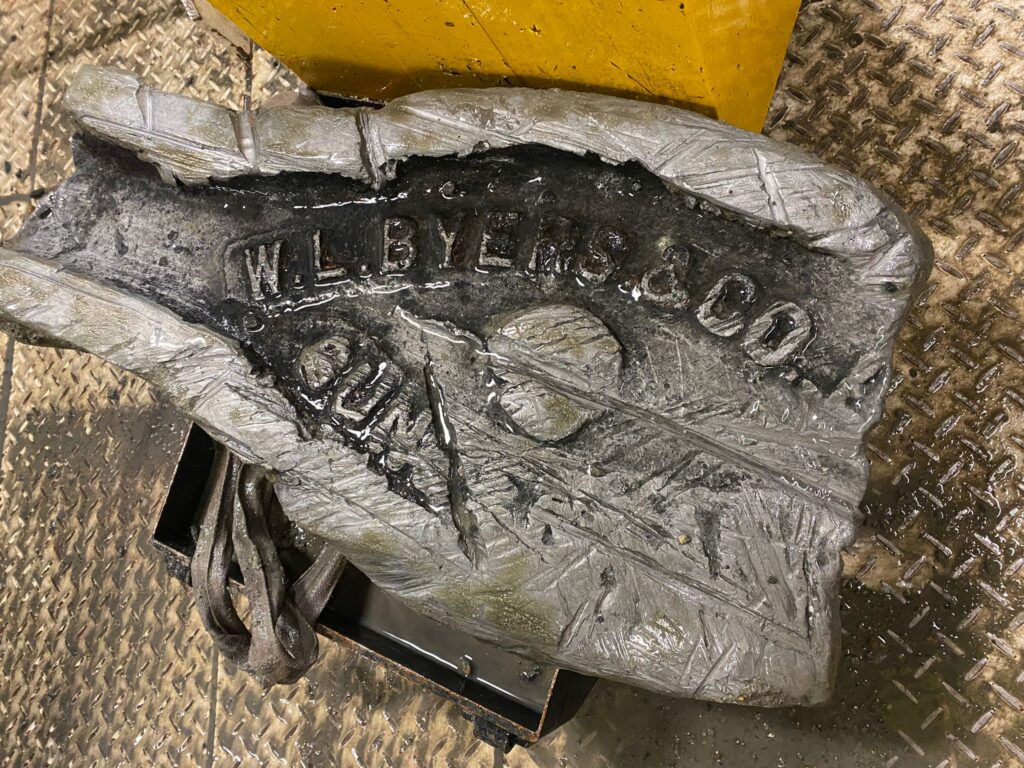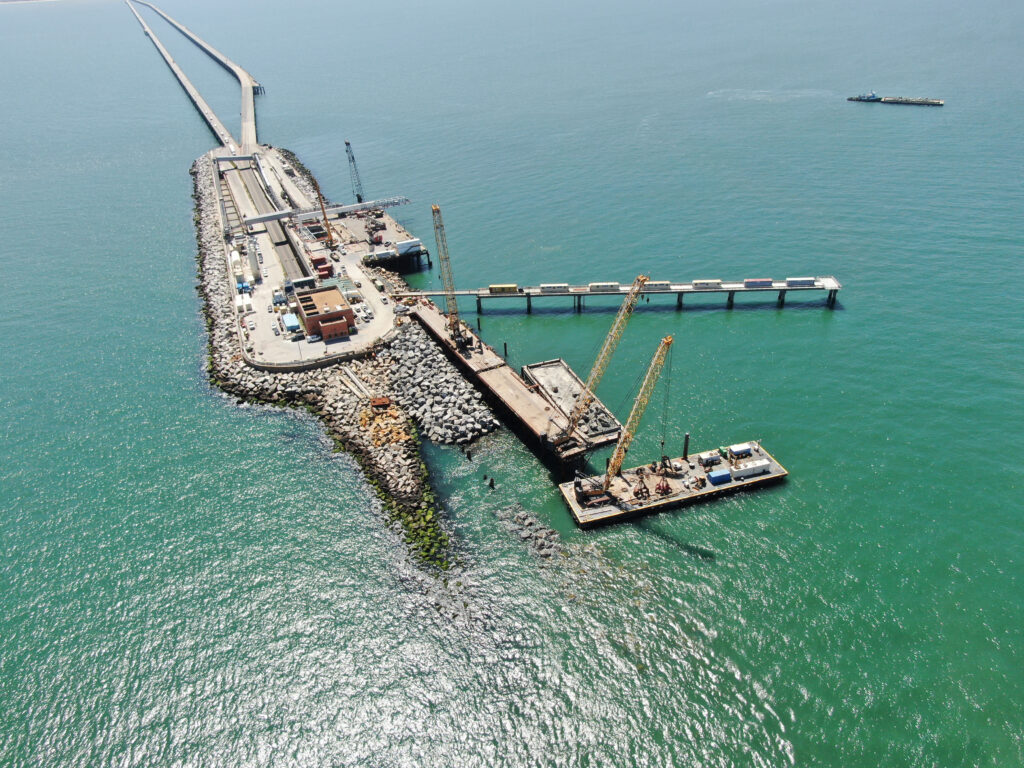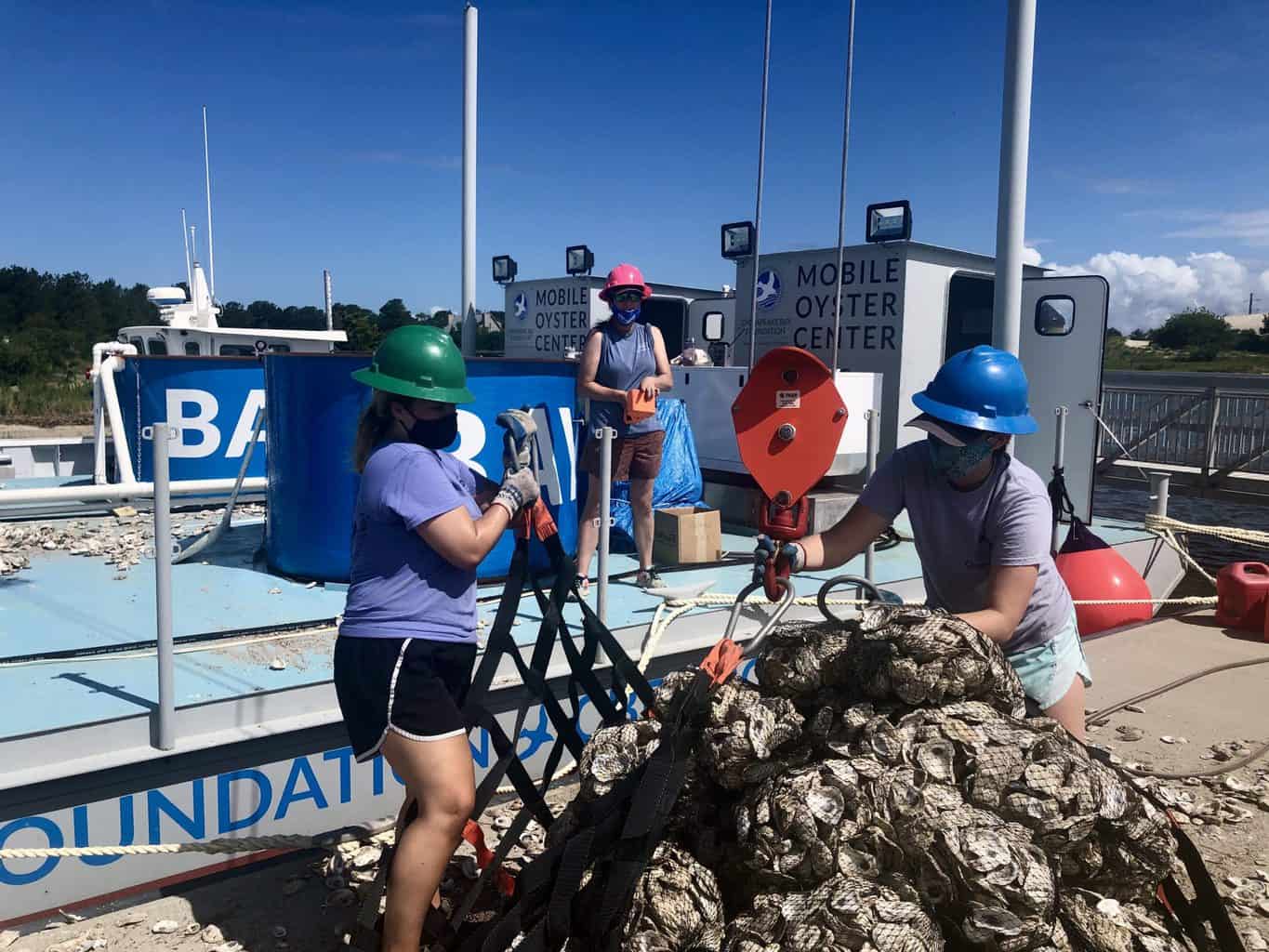The Chesapeake Bay Bridge Tunnel’s (CBBT) Thimble Shoal Tunnel project literally dug up a delay this month. The massive tunneling machine, known as Chessie, ran into a large antique ship’s anchor at the bottom of the Chesapeake Bay. This has put a stop to the tunneling entirely.
According to Michael Crist, Deputy Executive Director of Infrastructure at the CBBT, construction crews conduct surveys of an area before they start digging and boring tunnels. However, they can’t always find everything. “Any time you dig in the ground you will find something,” said Crist. The anchor, which Crist estimated at about 10-feet long with flukes are 3 or-4-feet long each, was not found in the preliminary survey. “It was buried under large rocks. We missed it,” he said.

The anchor has marking of “W.L. Byers Company.” According to Jeanne Willoz-Egnor, Curator of Maritime History and Culture at the Mariner’s Museum in Newport News, “It is difficult to provide more information about the anchor without better photographs and more details. But, based upon the limited available info, the anchor is likely from the 20th century, possibly 1920’s.” Willoz-Egnor noted that the battleship Missouri ran aground in the Thimble Shoal channel in 1950. A large number of anchors were deployed in the area in the efforts to re float the battleship.
The W. L. Byers Company was famous for their “stockless” anchor. The stock of an anchor is a bar that sticks out from the main anchor shaft at a different angle from the flukes. It functions to roll the anchor on its side on the seabed, which causes one of the flukes to dig into the sea bottom. Of course the other fluke sticks up, creating a hazard in shallow water. They were difficult to store. Stockless anchors worked and were much easier to stow.
The tunnel boring project is on hold until the anchor can be removed. “We don’t know if there is any damage to the cutters,” said Crist. “We won’t know until we get crews down to clear the area and assess the situation.” He said it will likely be December before they will have more answers. Crist noted that even though the tunneling is paused, there is still plenty of work to do.
The $756 million project aims to create a second, parallel tunnel between the first and second islands of the bridge tunnel complex. The new tube will be a mile long, and will carry two lanes of traffic southbound, while the existing tube will change from two-directions to two northbound lanes. Chessie, the German-made boring machine, has a 43-foot diameter head. The tunnel tube is built behind the head as the machine moves slowly forward. A huge conveyor belt system moves material from the tunnel to trucks for haul off. The tunneling is about 13 percent complete.
It is now estimated that the project will not be complete until 2027. “We will keep at it,” said Crist.
-Kendall Osborne




